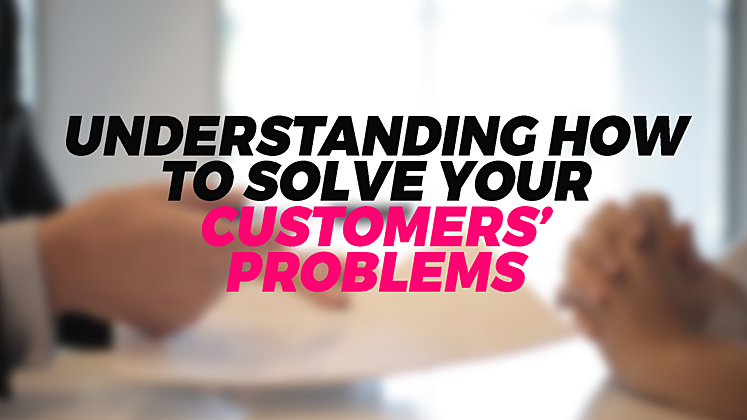SOLVING YOUR CUSTOMERS’ PROBLEMS

What Problems Do You Solve for Your Customers? Selling is about solving customer problems, whether those are problems customers are currently facing, or problems they will face as their marketplace evolves and their needs change.
If you are going to deliver high value to your customers, the first thing you need to do is to solve their problems.
If you can't put your finger on your customer’s problem, you won't solve it. Worse, you will waste time and lose credibility. You must describe the problem clearly, and do it from the customer's point of view. The problem should be one the customer sees value in solving. To find out what the really difficult problems are, ask the right questions and listen before acting.
The overarching problem, or goal, for most executives is how to make their businesses more profitable, as quickly, reliably, and as inexpensively as possible, so they can be assured that they will remain in business, keep the owners happy, and keep their jobs. Countless other problems are related to that main concern; for example,
1. Finding new customers
2. Keeping existing customers
3. Selling more to existing customers
4. Improving customer service
5. Reducing personnel costs
6. Reducing customer complaints
7. Decreasing time to market
8. Improving market share
The most successful salespeople in the software business are the ones who find pressing customer problems and do something to solve them in a way that is convenient, cost effective, or timely. They find problems that customers are ready to solve, then they work hard to solve them. Of course, finding those problems and then delivering good solutions for them requires a well-planned and organized effort. In the software development business, top sales professionals know that when you find customers’ significant, pressing problems, they will be willing to pay for a solution.
Finding those significant problems means sorting out customers who are ready and willing to buy from those who aren't. A critical success factor is how to market your problem-solving abilities so people know what you can do for them and how that they can save time, money or effort by using your solutions.
A good way to become a systematic problem solver is to adopt the following five-step problem-solving process:
1. Identify the problem - Don't try to solve a problem the customer sees as low priority or unimportant. Identify the right problem by asking the right questions and observing.
Analyze the problem - How often does the problem occur? How severe is it? Are there any special circumstances that are present when it occurs? What might be the causes of the problem?
Identify decision criteria - How will you and the customer make decisions when it is time to decide? How will you weigh the criteria? Can you identify independent standards that can be used?
Develop multiple solutions - Don't stop at the first solution that you or others identify. It may be good, but much better ones may exist. Evaluate alternative scenarios. As objectively as possible, assess the pros and cons of each.
Choose the optimal solution - Use the criteria you developed in the third step of this problem-solving process to choose the best solution. Develop a base of support that will ensure you can implement the solution. Prepare for contingencies.
When you solve problems systematically, you save time, achieve better solutions, and increase your credibility with the customer and the perceived value of what you've done.
Want to work with us?
Have this interesting project and you would like to partner with us? Give us a call today.
Contact us today!